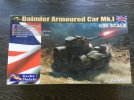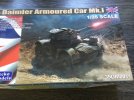Morning all, it's been a while ,sorry about that, but I wanted to be able to report real progress, rather than record all the faffing around, false starts and blind alleys I have been up to, trying to make some convincing water.
I searched this forum, I watched a couple of videos, I checked with my Stan Catchpol model making bible, I studied the specs and reviews of various expensive scenic water products. I did a few experiments of my own with clear silicone, clear pva, Liquitex, -all stuff I had to hand.
All of the above fell short in one way or another so I was a bit miserable, until I was in the local hardware shop and I found this.
View attachment 331174
I made a little test and it dried perfectly clear, so it seemed to be the ONE!
I wanted to show the Higgins boat at a quite extreme angle with a great big splash at the bow where it ploughs into a wave, which means I needed a bit more of a sculpted base rather than just a flat board.
I have no water supply in my loft, so I avoided Polyfilla and plaster because I wanted to keep things dry…(ironically). I had a go with Das, but I didn’t like that because it shrunk. So, to sculpt my choppy, D-Day English Channel I decided on plasticine. In my experiment version I covered the plasticine with ready-mixed Polyfilla, but I left it off on the final version because it seemed unnecessary. As it turned out it might have helped if I had tried a bit harder with it, so I must remember that for next time (if there is one).
I wrapped the boat in clingfilm to avoid damaging the paint.
View attachment 331175
I packed the boat up at the stern on a piece of foam to make my plasticine go further because I only had one pack, and this is all of it. Still, it’s not expensive at all.
I then coated it with PVA, and here I learned another lesson. In my test piece I used up the last of my old wood glue, which was very thick and gloopy, and worked fine. For the final piece I got some cheap kids’ PVA which was thinner and flowed more easily. Trouble was it didn’t stick very well to the plasticine and dried a bit too flexible, which created a few bubbles or blisters and gave me headaches later on.
I remember, back in the days of
Airfix Magazine, spending a lot of my pocket money on a tin of Unibond as recommended by Roy Dilley (his articles introduced me to the concept of converting figures) and clearly it’s worth paying that bit extra for quality.
As I said, in my test piece I then covered the PVA with ready-mixed Polyfilla, sanded it down because it was too gritty, painted it with gesso (2 coats) and then primed it with Halfords grey primer. This worked well, but it felt like rather a few too many stages.
Gesso is basically a thick paint, probably the original primer. It’s a very traditional product, I have no idea what it’s made of, all I know is that it was used by the old masters and sculptors way back to renaissance times.
In the final piece I went straight from PVA to gesso and I had a real fright!
View attachment 331176
I must try and remember this for the next time I need a cracked white surface over a dark background-but then of course it probably won't behave like this!
Fortunately a second coat sorted it out, but the blisters were still evident, which indicated that it was not a very tough shell. I was tempted to strip it off and try again, but I just want it finished now, so I steamrollered ahead and went straight to paint.
In my test piece I felt the colour was too pale, so I was able to rectify that mistake. One of the things I did learn from my research is to paint not only the colour variations but the white for the wake as well.
View attachment 331178
You can clearly see the blister on the bottom right corner, which I decided to ignore in the end, in the hope that the silicone/glue would obliterate it.
So now there was nothing left but just to go for it with the ClearFix.
I tried various methods of applying it and texturing it in my test piece and I thought I knew what I was doing, but when it came to the real thing I still made a mess of it. I had tested various liquids and chemicals for a way of preventing the ‘cake icing’ peaking that I dislike. I found that acetone and water both worked quite well, so I went with water, applied with a cotton bud. I preferred that to a brush as they are expendable. What I didn’t spot, until it was too late, was that the water leaves the surface slightly matt, whereas the acetone leaves it glossy (a bit more like, um, water….DOH!).
I also found it difficult to blend the beads from the solvent gun nozzle, with the result that all the wavelets are about 6mm wide…fortunately I instinctively applied them in the direction of the waves, rather than some random pattern. So I guess the Clearfix wasn’t the miracle solution, but it certainly is clear, which my ‘clear’ silicone was not.
But I’m not stripping it off and doing it again because that would amount to doing it a third time, and I’m approaching the choked-off phase. So, the matt(ish) stays.
Maybe I can lacquer it a bit, but we’ll see.
View attachment 331179
Once I had got the main part done I went around with a syringe, filling the gap between the water and the hull, adding bits here and there to make more of the wake, the bow wave and the wave tops.
View attachment 331180
For the big bow splash I added spikes of clear plastic packaging which I then built up in stages with the ClearFix, with a piece of plastic in between to mask the boat itself.
View attachment 331181
View attachment 331182
The final touches to the water will be to paint the foam with white acrylic, which will be the next installment.
Thanks for looking, I think it’s time to sit back and draw breath…….
cheers
Neil




